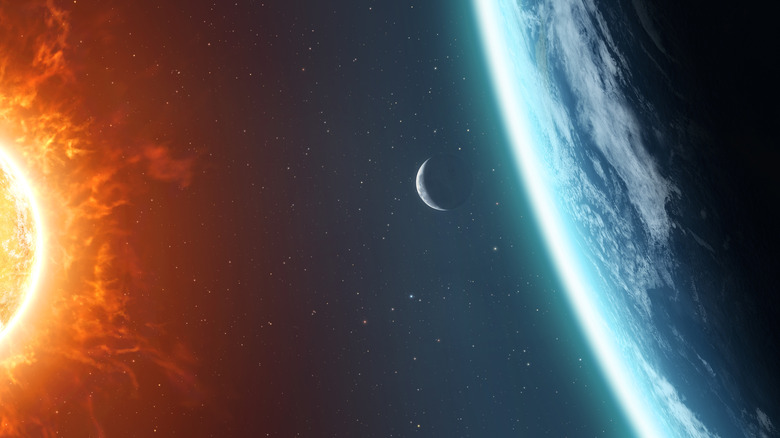
Raycat/Getty Images
Out in the depths of space there lurk a range of threats to our very existence. A “War of the Worlds” scenario might be implausible, but can’t be discounted. Then there are meteorites. According to NASA, a strike from anything bigger than around two kilometers could have the potential to threaten the whole planet. Our most prominent neighbor in the Solar System, the Sun, poses an enormous threat to us too.
Generally speaking, of course, the Sun is crucial to life on Earth. From keeping the planet a survivable temperature, to ensuring that the world’s vegetation can photosynthesize, to preventing us from careening off into space, we’re entirely reliant on that spectacular star of ours. Being the capricious and mighty astronomical mass it is though, the Sun will also incinerate the planet in the distant future.
The silver lining, though it’s something of a stretch to call it such, is that we’re not going to be here when it happens. Let’s take a look at the fate that awaits life on Earth, and the even more terrifying one that’s going to befall the planet too.
What will happen to humanity?

Blackjack3d/Getty Images
On Earth, stars appear to twinkle in the distance. They’re not just benignly, passively bright, though: In order to emit light as they do, they go through a continual process of nuclear fusion. This is the process whereby the Sun’s hydrogen atoms complete fusion into helium atoms, the result being a tremendous amount of energy, heat, and light. Though our Sun has vast stores to draw from to continue doing this process (it’s 4.5 billion years old after all), those stocks, and therefore its lifespan, are finite. The process, in addition, takes a heavy toll on the Sun in our aged Solar System.
The brightness of the Sun, or its luminosity, is affected by its temperature. That, in turn, is increased by the burning of hydrogen and the internal changes that result. In short, the Sun becoming brighter is bad news for us.
This increase in brightness is very slow. Approximately every 110 million years, the Sun’s luminosity is boosted by about 1%, E.T. Wolf and O.B. Toon cite in a December 2013 Research Letter called “Delayed onset of runaway and moist greenhouse climates for Earth.” While it doesn’t sound like much, the study explains, “Increased solar radiation should at some point trigger moist and then runaway greenhouse climates, ending any hope for continued surface habitability.” This habitability will disappear in approximately 1.5 billion years, and so will the seas.
What will happen to the planet itself?

Aryos/Getty Images
Naturally, an Earth where it’s 74 degrees Fahrenheit at the South Pole is going to make the rest of the planet inhospitable. Around this time, Kazumi Ozaki and Christopher T. Reinhard suggest in the 2021 study “The future lifespan of Earth’s oxygenated atmosphere” that very atmosphere’s oxygen will have been taken by increasing solar activity. Around 3.5 billion years later, the Earth is due to be destroyed by the influence of the dying Sun.
With its energy spent, the Sun will become a red giant, a gravity-altered dying star that expands hungrily outward. Science cannot yet confirm whether this red giant will be large enough to reach Earth and destroy it directly, but it won’t need to. Closer proximity of the Sun and its devastating power in this state would be sufficient to simply melt away the body of the planet itself. Only the very core, which is a high-pressure metal blend 2414 km in size, would have a chance to survive.
Though this all seems very distant in terms of the history and future of humanity, this isn’t a very long time in astrological terms. There probably won’t be any need to cancel dentist appointments or similar in view of the impending catastrophe, though. It’ll be many human lifespans away.
Note: This article have been indexed to our site. We do not claim legitimacy, ownership or copyright of any of the content above. To see the article at original source Click Here












